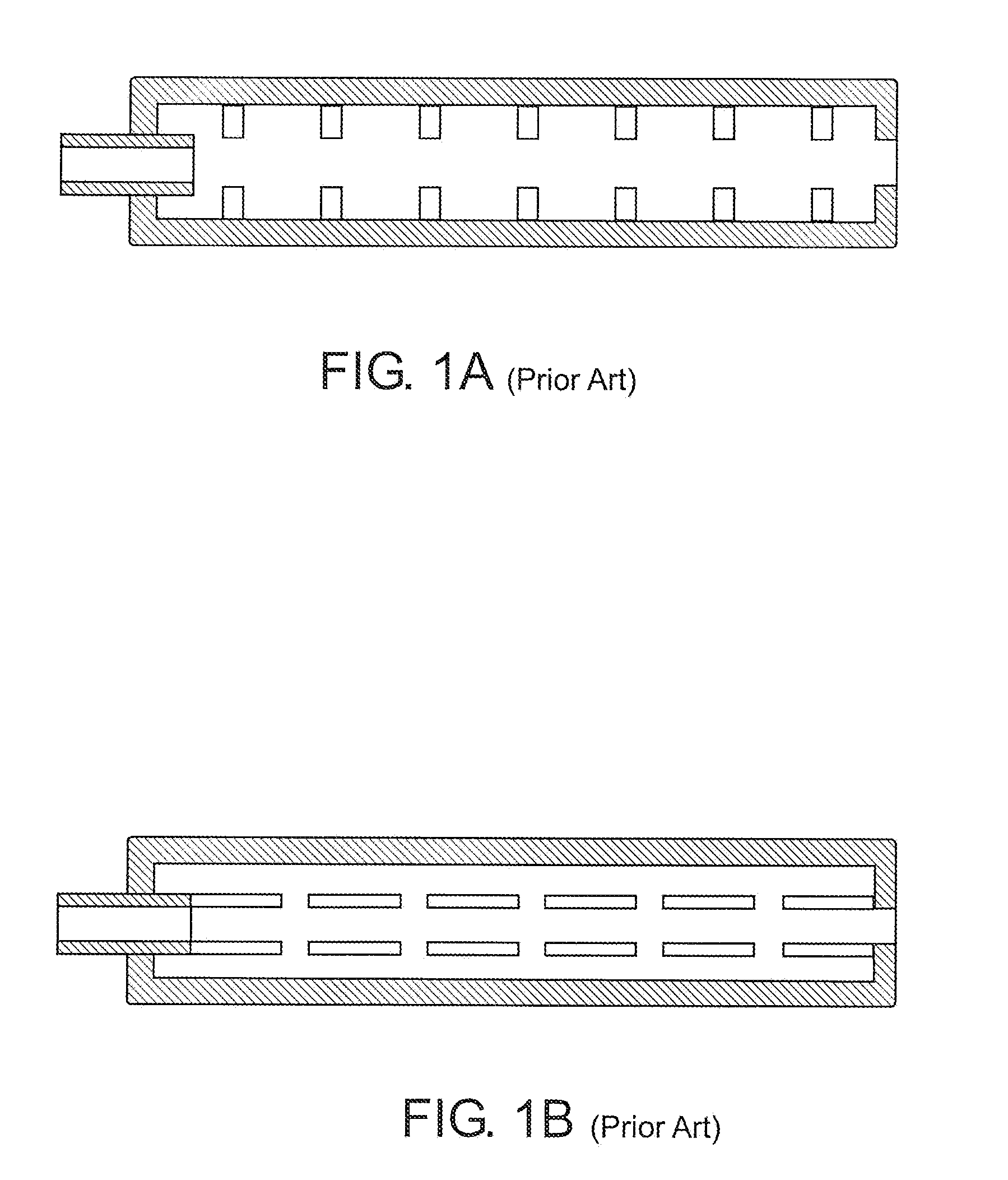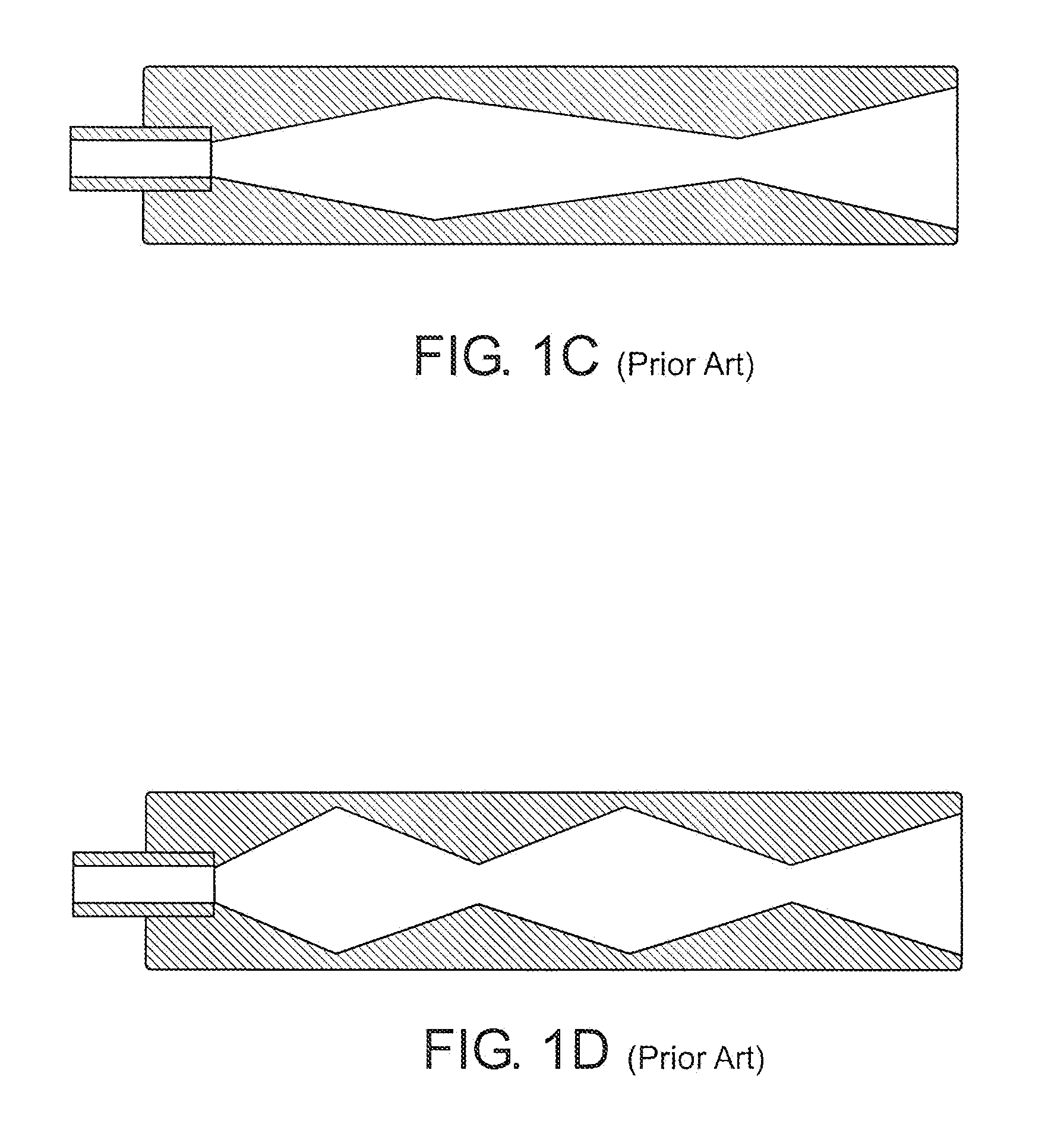Controlled-unaided surge and purge suppressors for firearm muzzles
- Summary
- Abstract
- Description
- Claims
- Application Information
AI Technical Summary
Benefits of technology
Problems solved by technology
Method used
Image
Examples
embodiment 100
[0071]Experimental and analytical analyses of the “CUSPS” embodiment 100 indicates: the “CUSPS” can reduce the noise induced by the firearm's muzzle blast wave, reduce the radiant flash caused by the propellant gases and ingest ambient air to both cool the suppressor and purge it of residual gases, thereby increasing its useful life span.
[0072]Based on their experimental and analytical results, and the observation that the vent holes permits easier flushing of the interior volume with cleaning fluids, the Applicants believe the “CUSPS” embodiment 100 will reduce the blast wave induced noise at three feet from the muzzle exit by 20 db or more, make the gas flash visually undetectable to an observer at any distance greater than 1000 muzzle diameters, and have an indefinite useful lifetime if properly maintained.
[0073]In the embodiment 100, the entrance and lobed nozzle 116 serve to control and reduce the static pressure of the gases exiting the muzzle while the vent holes 104 first di...
embodiment 1000
[0106]FIGS. 14 and 15 depict elements like those found in the preferred embodiment 1000, shown in FIGS. 11-13, but reference them with the prefix 1100 rather than 1000. For example, the alternating baffles are referenced as 1112A, 1112B, 1112C, 1112D, 1112E, 1112F in FIGS. 14 and 15.
[0107]Both of these blast baffle configurations create an immediate disruption in the flow while allowing the gas to travel a path besides on centerline.
[0108]Field tests of the design shown in FIG. 11 verified high levels of noise and flash suppressor, while maintaining aiming accuracy with virtually no negative impact on the loading and firing mechanisms.
[0109]As in the parent application, the entrance divergent nozzle's exit diameter and length (in the C-I-P embodiments) are established using classic gas dynamic principals to produce isentropic, or near isentropic, expansion of the muzzle gases into the suppressor.
[0110]The exit nozzle diameter and length are established using classic gas dynamic prin...
PUM
 Login to View More
Login to View More Abstract
Description
Claims
Application Information
 Login to View More
Login to View More - R&D
- Intellectual Property
- Life Sciences
- Materials
- Tech Scout
- Unparalleled Data Quality
- Higher Quality Content
- 60% Fewer Hallucinations
Browse by: Latest US Patents, China's latest patents, Technical Efficacy Thesaurus, Application Domain, Technology Topic, Popular Technical Reports.
© 2025 PatSnap. All rights reserved.Legal|Privacy policy|Modern Slavery Act Transparency Statement|Sitemap|About US| Contact US: help@patsnap.com



